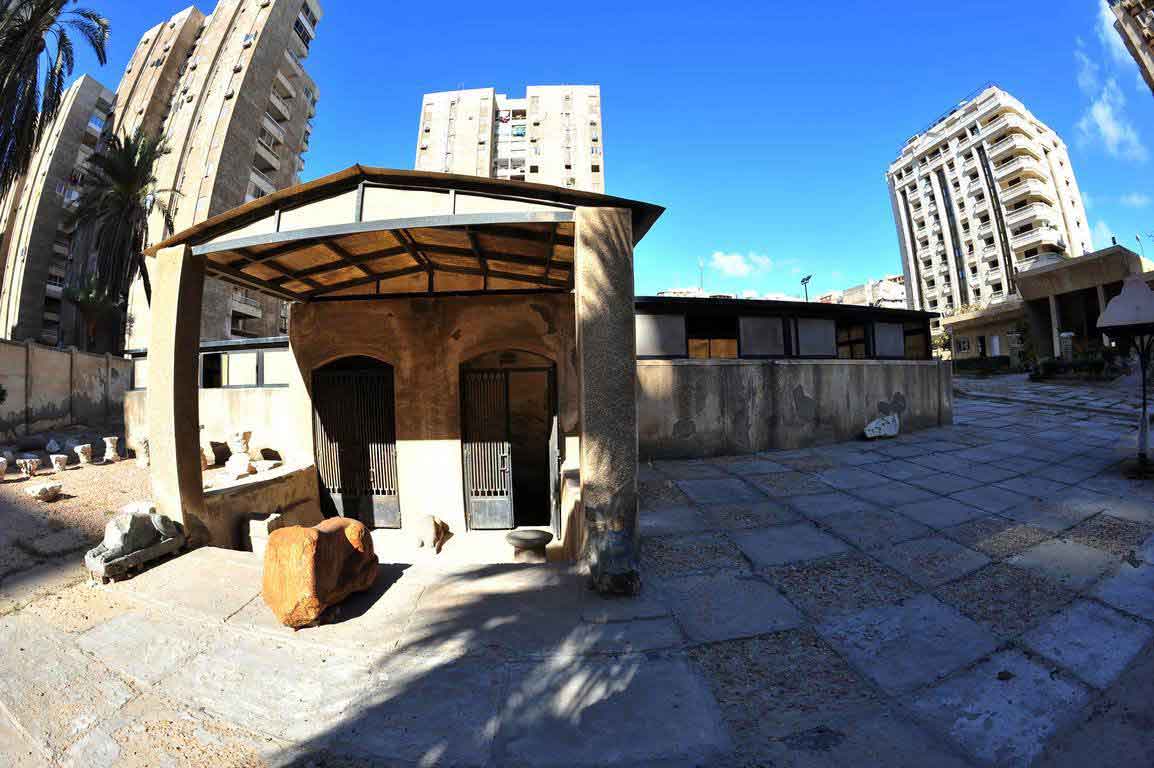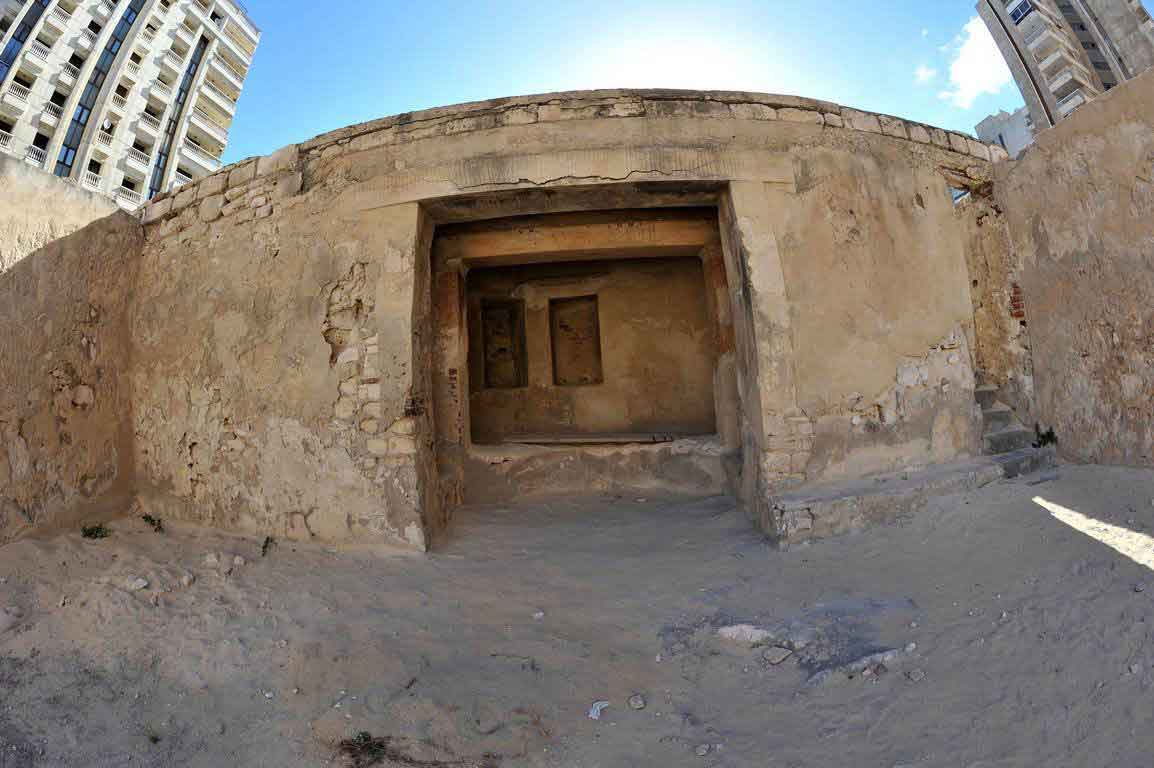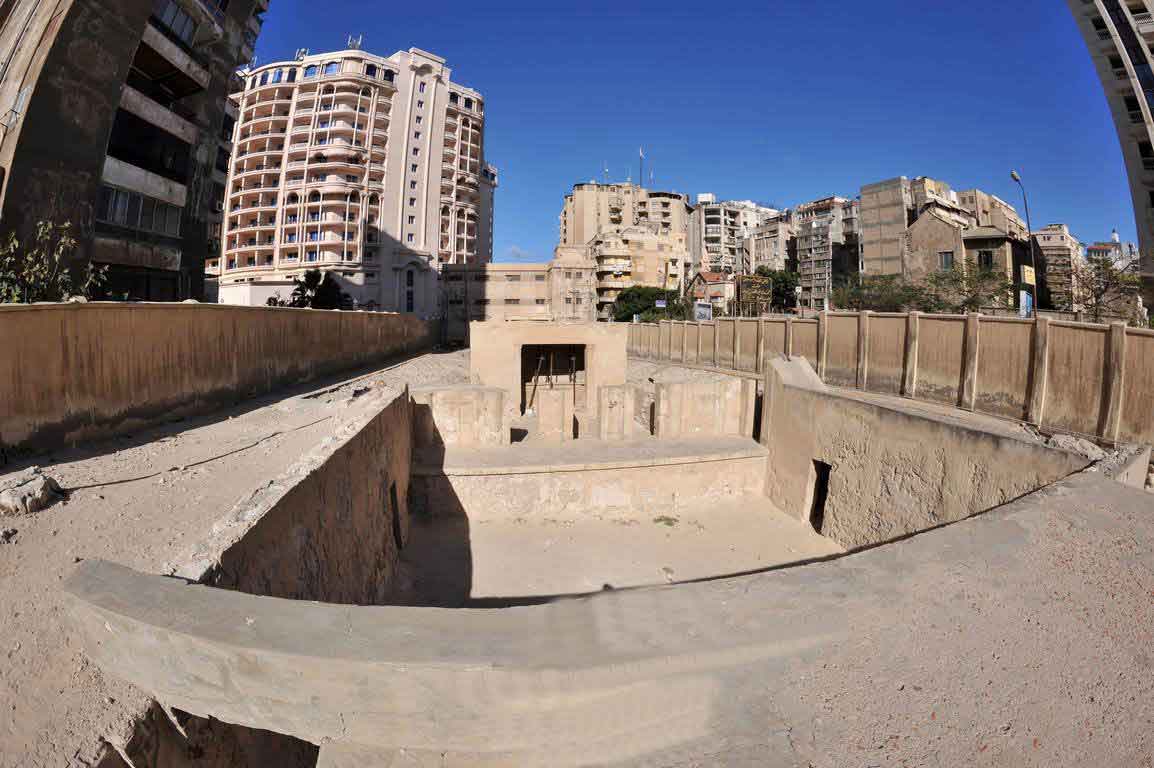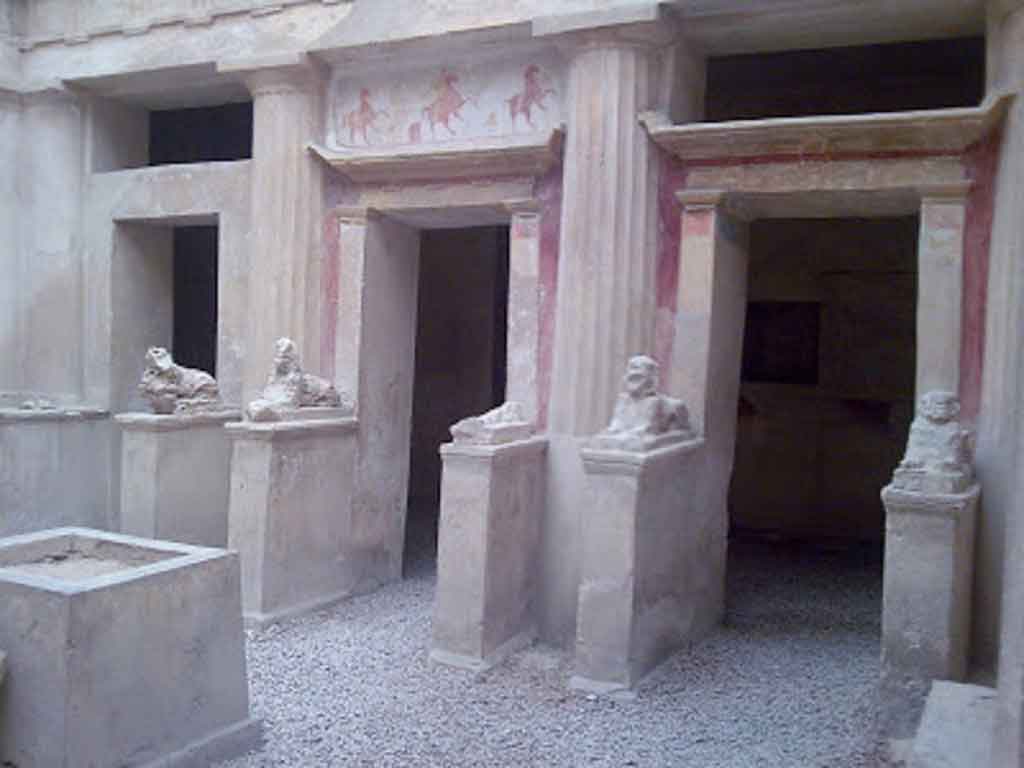






The history of the tombs is from the late third century to the beginning of the second century AD, and everyone was dedicated to a few people who follow ELEUSIS.
Belonging to the tombs of a burial unit in eastern Alexandria, foreigners, mainly Greeks, preferred them during the Ptolemaic era. The first one begins with a Wide staircase leading to the altar of a square courtyard surrounded by a series of half-dormitories and 10 rooms accessed directly from the courtyard or a window that arrives there.
The north side has 3 rooms, the east side has 3 rooms and the south side has 3 rooms and the second room leads to the burial chamber (OIKOS). It is a small shaped couch with Greek names recorded, maybe for the cemetery visitors or for the dead.
There are 3 sockets, east and west side of the balcony represent loculi and on the west wall on the north wall side there is a semi-circular basin with the opening of the conductive ceramic tube to deliver the water to the basin to the outside courtyard in front of a middle room on the north side chamber 2, there are five holes for the dead, three of these are on the north wall and it still has color effects and two on the south wall, and this room has another hole that looks like these holes which were made later, the south part of the yard is the most decorated part of the cemetery, with three of the doors appearing in bright colors and on both sides of the doors, there are two bases with Sphinx.
The second cemetery: begins a staircase carved into the rock leading to a square courtyard separated by the adjacent room,
to the south there are two columns and a room with holes for burial on both sides, this room leads to another room, separated from the two columns of the dormitory style, and is the front room, small room Master for burial A house was found at the entrance of a table to offer gypsum covered stones to imitate the marble bark (Pompeii style) and at the end exist there is a casket in the form of a sofa or bed accompanied by a bronze nail maybe for hanging flowers, there is a room that opens into the courtyard with a couch shaped like a light wagon driven by the Greek goddess of love and women and flower wreaths ,
followed by the sixth room on the same side that has a fireplace, the seventh section was used for receptions, where we see limestone seats,
the third tomb is in worse shape than the first and second, the fourth, fifth, until the seventh totally destroyed. Address: Address: Roman Camp Street, Northeast of Mustafa Kamel Military Camp - Mustafa Kamel
